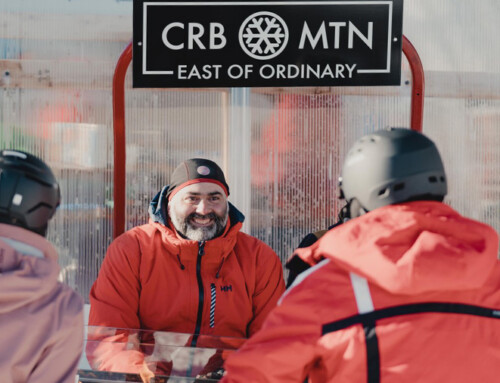Courtesy
The leaves are turning, the mercury is plunging and instead of feeling excitement for the upcoming ski season, you’re riled with panic and guilt. You’ve spent the summer months floating in a dinghy and slugging back burritos. You’ve got a big ski vacation coming up and the most physical thing you’ve done all summer was that late-night beer run.
Sound familiar? Well, you’re not alone. The dog days of summer can take a bite out of the best of us. Don’t fret. Even small adjustments to your daily routine can make a big difference in getting you slope ready. We spoke with Dr Pushpa Chandra, a Vancouver-based naturopath specializing in sports medicine, about simple ways to go from pile to piste without rearranging your entire life.
Focus on Balance and Stability
Skiing takes a lot of lateral movement and joint stabilization, especially in the hips and knees, so incorporate balance exercises into your routine. This can be as simple as standing on one foot to help strengthen the small stabilizing muscles crucial for balance and dexterity.
“Sometimes when I’m doing something by the sink, I’ll just contract my belly and hold myself up in good form and stand on one leg,” says Dr Chandra. “You can also do calf raises while doing dishes, or even while standing in a bar. Try doing a squat while you’re holding a beer. This is not only building endurance in the shins, legs and on your toe edge, but it’s also improving balance and control.”
Have A Seat
No, not in your La-Z-Boy. We’re talking wall sits here. This simple but effective exercise builds the quad strength and endurance needed for skiing—and it can easily be done on coffee breaks or while catching up on your favourite ski flicks.
Start with your back against a wall and your feet shoulder-width apart, a couple feet from the wall. Slowly slide your back down the wall until your thighs are parallel with the ground and your knees are above your ankles. Hold the position for 20 to 60 seconds, rest for 30 seconds and repeat. Increase the hold length and reps as you progress.
Don’t Be Anaerobic Phobic
You know that leg burn you feel mid-run? That’s lactic acid building up in your muscles. Anaerobic exercises improve your body’s ability to process this acid and function with depleted oxygen, allowing you to ski hard and recover faster. Many anaerobic workouts involve High-Intensity Interval Training (HIIT)—periods of maximum effort followed by rest and then by intense effort again. Think sprint-jog-sprint. Steep uphill bursts are even better. A workout of eight 20-second sprints with 30 seconds of rest in between is way more effective than jogging for 10 minutes.
“I love jump squats,” says Dr Chandra. “You’re using all your muscle groups. I’ll jump forward and backwards and touch my knees to my hands. These are very quick, very explosive movements. You can do it for 30 seconds and you’re sweating. It’s great training for skiing because those explosive movements also prepare you to dodge a tree, or drop off into something.”
Build Strength and Power
Strength helps you bust the crust and keep your skis pointed. The muscles in the back of your body—your glutes, hamstrings, lower back and lats—keep you stable in uneven terrain and allow you to charge through the deep, wet stuff. Try focusing on building eccentric, rather than concentric strength. Eccentric strength is “negative”, the effort used to lower yourself into the bottom of a squat. Alpine skiing primarily demands eccentric strength.
“Focus on anything that your body is doing to move laterally,” says Dr Chandra. “These lateral exercises build strength around your knees, building lateral power, which is the key element for preventing injuries when falling.”
Work on Technique for Efficiency
If you don’t have good technique, all the sweat will have been for nothing. You want your body to work naturally with your skis, rather than fight your way through the terrain. Consider booking a couple of hours of lessons at the beginning of a week’s holiday as a refresher. Or catch up on ski technique videos online while you’re doing wall sits.
“When you’re exercising, focus on being in a nice tight position, which will give you a lot of control,” says Dr Chandra. “Make sure your abs are always tucked in, your shoulders are aligned. You need to watch how you’re moving. Are you moving with intent, control and efficiency, or just flopping around?”
Rest and Recover
The clock is ticking, but that doesn’t mean skip the rest days. The last thing you want is to suffer an injury or burnout leading up to your trip. So listen to your body.
“You must recognize when you’re tired,” says Dr Chandra. “That’s when you’re very vulnerable to injury. This is when you must take your day off. And don’t feel guilty about it; you’re actually doing yourself a favour by repairing and rejuvenating the cells that have micro tears in them.”








